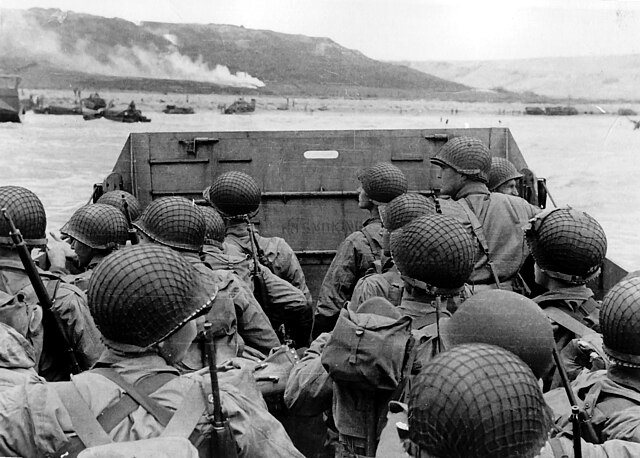The Fleet Landing Exercises, or FLEX were amphibious landing exercises conducted by the United States Navy and United States Marine Corps between 1935 and 1941. The purpose of these exercises was to formulate a workable amphibious warfare doctrine. The development of the necessary craft and other equipment, and the proper tactical deployment of them were also results. Finally, the exercises demonstrated the usefulness of a standing body of Marines, the Fleet Marine Force, specially prepared for amphibious expeditions.
The use of scramble nets for embarkation was first tested during FLEX 3. These US Marines climb down a scramble net to an LCP(L) during preparations, in the Fiji Islands, for the Guadalcanal Campaign that would take place in August 1942.
Image: Reinforcements land on Guadalcanal
Landing craft are small and medium seagoing watercraft, such as boats and barges, used to convey a landing force from the sea to the shore during an amphibious assault. The term excludes landing ships, which are larger. Production of landing craft peaked during World War II, with a significant number of different designs produced in large quantities by the United Kingdom and United States.
Landing Craft, Vehicle, Personnel (LCVP) used in the Invasion of Normandy in World War II
Dutch landing craft
Finnish Jehu-class landing craft
The Soviet-built PTS-M is an unarmoured, fully tracked landing craft that was designed to transport troops or equipment inland.






